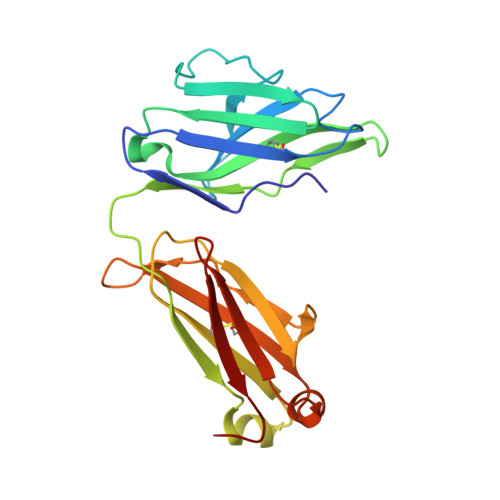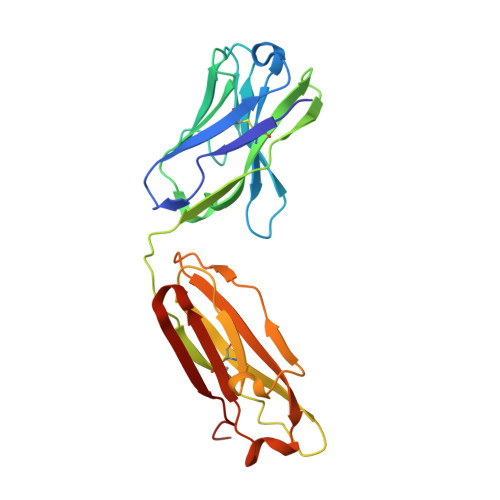A covalent inhibitor of K-Ras(G12C) induces MHC class I presentation of haptenated peptide neoepitopes targetable by immunotherapy.
Zhang, Z., Rohweder, P.J., Ongpipattanakul, C., Basu, K., Bohn, M.F., Dugan, E.J., Steri, V., Hann, B., Shokat, K.M., Craik, C.S.(2022) Cancer Cell 40: 1060-1069.e7
- PubMed: 36099883
- DOI: https://doi.org/10.1016/j.ccell.2022.07.005
- Primary Citation of Related Structures:
7KKH - PubMed Abstract:
Immunotargeting of tumor-specific antigens is a powerful therapeutic strategy. Immunotherapies directed at MHC-I complexes have expanded the scope of antigens and enabled the direct targeting of intracellular oncoproteins at the cell surface. We asked whether covalent drugs that alkylate mutated residues on oncoproteins could act as haptens to generate unique MHC-I-restricted neoantigens. Here, we report that KRAS G12C mutant cells treated with the covalent inhibitor ARS1620 present ARS1620-modified peptides in MHC-I complexes. Using ARS1620-specific antibodies identified by phage display, we show that these haptenated MHC-I complexes can serve as tumor-specific neoantigens and that a bispecific T cell engager construct based on a hapten-specific antibody elicits a cytotoxic T cell response against KRAS G12C cells, including those resistant to direct KRAS G12C inhibition. With multiple K-RAS G12C inhibitors in clinical use or undergoing clinical trials, our results present a strategy to enhance their efficacy and overcome the rapidly arising tumor resistance.
Organizational Affiliation:
Department of Cellular and Molecular Pharmacology, University of California, San Francisco, San Francisco, CA 94158, USA; Howard Hughes Medical Institute, University of California, San Francisco, San Francisco, CA 94158, USA.

















